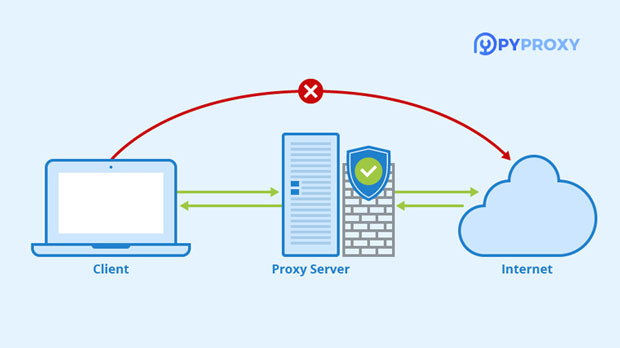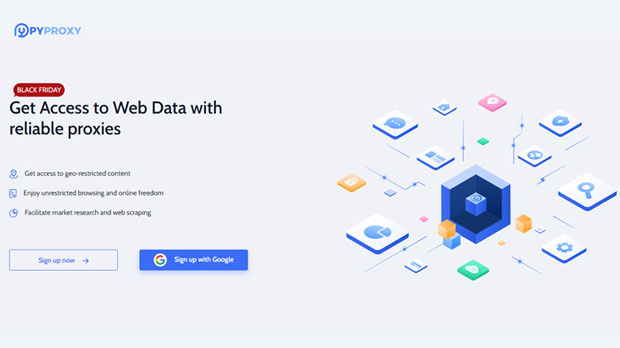The use of a Linux socks5 proxy server can have a significant impact on the speed and efficiency of accessing overseas servers. SOCKS5 is a versatile proxy protocol that supports various types of traffic, including web browsing, emails, and even gaming. When implemented on a Linux-based server, it can improve security and anonymity, but it may also introduce latency depending on factors like server distance, network quality, and the proxy configuration. In this article, we will delve into how a Linux SOCKS5 proxy affects overseas server access speed and examine key factors that influence performance. What is a Linux socks5 proxy server?A SOCKS5 proxy server is a networking protocol that routes internet traffic between a client and a destination server through an intermediary server. The “SOCKS” in SOCKS5 stands for "Socket Secure," and the number "5" refers to the latest version of the protocol. Unlike HTTP proxies that work only with specific protocols (usually web browsing), SOCKS5 can handle any kind of traffic, such as FTP, email, and peer-to-peer (P2P) traffic, providing more versatility.When the SOCKS5 proxy is hosted on a Linux-based server, it offers enhanced stability, security, and performance. Linux servers are known for their efficiency and scalability, which make them an ideal choice for running proxies. The impact on access speed to overseas servers largely depends on how the proxy is configured and the distance between the client and the overseas server.Factors Affecting Overseas Server Access SpeedSeveral critical factors determine how much a Linux SOCKS5 proxy influences access speeds to overseas servers. Let's break them down:1. Geographic DistanceThe geographic distance between the client (user) and the SOCKS5 proxy server, as well as between the proxy server and the overseas server, is one of the most important factors. Every time a user connects to an overseas server through the proxy, the data must travel longer distances, which adds latency. If the SOCKS5 proxy server is located in a region far from both the client and the target server, the overall connection speed will likely be slower.For example, if a user in Asia is accessing a server in the US through a SOCKS5 proxy located in Europe, the data has to go through multiple regions, increasing the round-trip time. The further the distance, the more time it takes for packets to travel, thereby impacting the speed.2. Proxy Server Load and BandwidthThe load on the SOCKS5 proxy server and the available bandwidth play a crucial role in determining access speed. A highly loaded server with many simultaneous connections will experience slower processing times, leading to higher latency. On the other hand, a well-maintained proxy server with ample resources and lower traffic load will provide faster speeds.Additionally, bandwidth limitations can also affect performance. If the SOCKS5 proxy server has limited bandwidth, it could lead to bottlenecks, especially when the overseas server’s data transmission exceeds the proxy’s capacity. This issue is common in shared proxy servers where multiple users are consuming the same bandwidth.3. Network Quality and ReliabilityThe quality and reliability of both the client’s internet connection and the network infrastructure between the SOCKS5 proxy server and the overseas server are key factors. Poor network quality, such as high packet loss or unstable connections, can cause delays, reduce speed, and even lead to connection failures. A high-quality, stable network connection between the proxy server and the overseas server can ensure smoother and faster data transmission.In addition, if the overseas server itself is located in a region with a poor network infrastructure or limited bandwidth, the overall access speed could be compromised, regardless of the SOCKS5 proxy’s configuration.4. Encryption and Security ConsiderationsOne of the benefits of using a SOCKS5 proxy is the ability to enhance security and maintain user anonymity. SOCKS5 supports both UDP and TCP protocols and can be configured to use authentication methods, making it a highly secure option. However, the encryption layer that protects user data can also introduce some latency.When traffic is encrypted, more time is needed for the data to be processed, especially if the encryption method used is resource-intensive. While this may not be a major issue in terms of security, it can cause a slight delay in the connection, reducing the access speed to overseas servers.5. Proxy Configuration and TuningThe way the SOCKS5 proxy server is configured can have a direct impact on access speeds. For instance, specific settings such as buffer sizes, connection timeouts, and DNS resolution methods can either enhance or hinder performance. Properly configuring the proxy server to optimize these parameters can minimize delays and improve access speed.Moreover, some advanced configurations allow for connection multiplexing, which lets multiple connections share a single proxy session. This can reduce overhead and improve the speed when accessing overseas servers, especially when handling numerous requests.How SOCKS5 Proxy Impacts Access Speed to Overseas ServersIn most cases, using a SOCKS5 proxy on Linux will introduce some level of latency due to the intermediary nature of the protocol. However, the impact on access speed largely depends on the combination of the factors mentioned above.For example, if the SOCKS5 proxy server is geographically close to both the client and the overseas server, the added latency might be negligible. Conversely, if the server is located far away, the additional distance will increase the round-trip time, leading to noticeable delays.Additionally, well-maintained and optimized SOCKS5 proxy servers can significantly improve access speed. A server with a high bandwidth limit and low load can provide a faster, more reliable connection, reducing the performance hit associated with using a proxy.Best Practices for Optimizing SOCKS5 Proxy PerformanceTo ensure the best possible access speed when using a Linux SOCKS5 proxy server, consider the following best practices:1. Choose an Optimal Server LocationSelect a SOCKS5 proxy server located as close as possible to both the client and the overseas server. This will reduce latency and improve access speed. For users connecting to overseas servers in a specific region, choosing a proxy server within the same region can minimize delays.2. Use High-Speed Servers with Sufficient BandwidthEnsure that the SOCKS5 proxy server has adequate bandwidth and resources to handle traffic without significant slowdowns. A dedicated server with high-speed connections will provide a smoother experience for users accessing overseas servers.3. Optimize Proxy SettingsProperly configuring the proxy server can reduce latency and improve speed. This includes setting appropriate buffer sizes, reducing connection timeouts, and enabling connection multiplexing for higher efficiency.Using a Linux-based SOCKS5 proxy server to access overseas servers can impact connection speeds, but the degree of impact depends on multiple factors, including geographic distance, server load, network quality, and encryption. By following best practices such as optimizing server configurations and choosing high-speed proxy servers, users can mitigate latency and enjoy faster, more reliable access to overseas resources.
Sep 16, 2025






















































